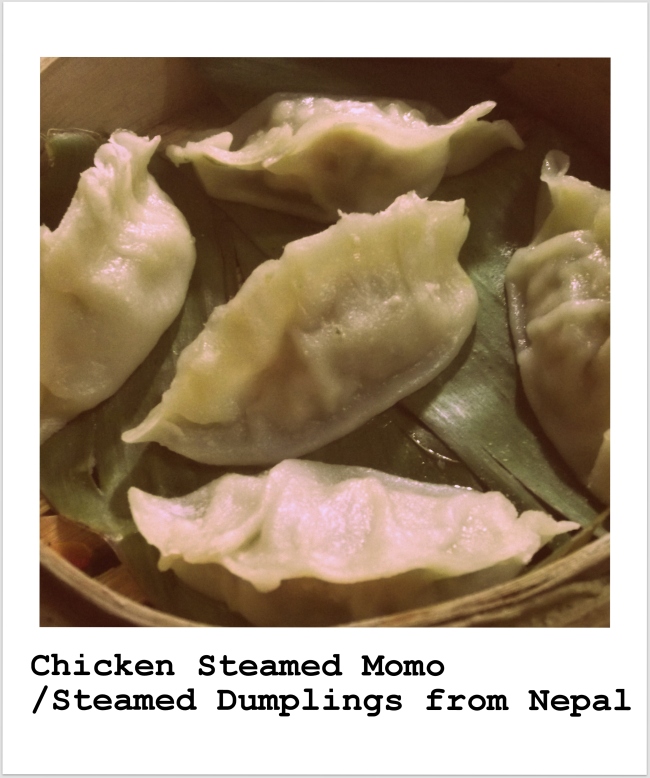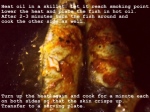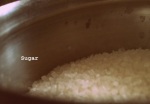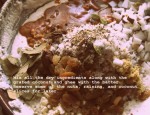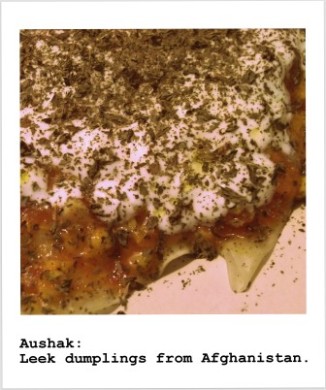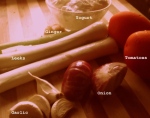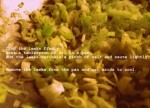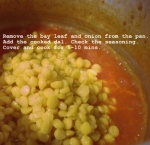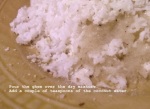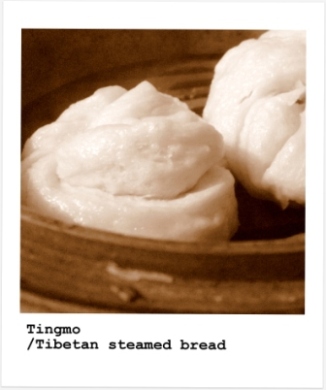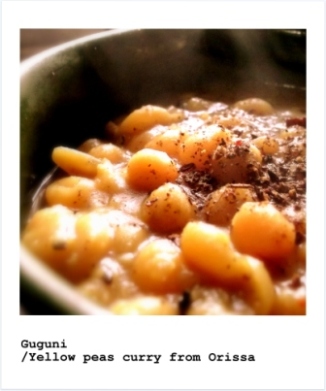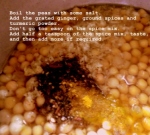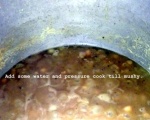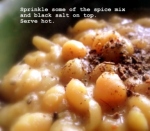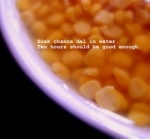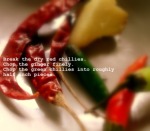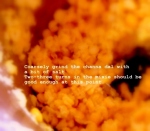
For once, I am going to be first at something-first at issuing a trigger warning for a recipe for tea. No, no, don’t leave already. The recipe is pretty standard, and I’ll let you know where the triggering bits are, I promise. Trust me, I will. But, if you are busy, and just need the recipe, scroll until the very end. You are welcome.
“Espresso is just like chai. When we ask for an espresso in Italy, it just means coffee, like you call tea, chai in India”, F said while we manoeuvred cobbled lanes and an unexpected flurry of tourists in a quiet part of the busy tourist district. “Your Hindi diction is perfect”, I said approvingly. We settled for overpriced coffee-decaf for me, cappuccino for F.
“Do you always have decaf?”.
“Isn’t it too late for caffeine? Are you sure you’d be able to sleep tonight?”
“I drink a litre of coffee a day, don’t worry”
No, no chai in the story. Just yet. Lots of hot beverages, often decaf, conversations, and walks in this city each of us call home, however. Homes in leafy neighbourhoods with back gardens. In tiny rooms in flats shared with strangers whose lives we know nothing about, yet share the intimacy of smells and sounds of daily living. Homes on boats that grow cold in winter, that glide across canals, chosen because “that’s how much we can afford to spend”. Homes with partners. With parents. Sometimes homes that we fill with the the voices of people from gadgets, as proxy for people we wish were around. Homes with solitary coffee mugs, chipped at edges.
We share stories of how we ended up taking the walk we were taking, speaking what we were able to speak. Of broken homes, happy families, of aspirations, failures, of hurting and being hurt. Of food we grew up with, and some we have come to love. Sushi and Dhalpuri and Mole and Inky Arancini. Of huge fish carried on the shoulders of wiry men. Of choosing snakes in wet markets. Of big Sunday lunches. And of modest weddings. Of books read and unread. Of growing up on frozen dinners and free school meals. Of binge reading Death Note, and rereading Marquez. Of watching Studio Ghibli in very different parts of the world. Of the films of Almodovar. Of the number of times we could watch LOTR. Of Twitter feuds and TikTok clips. Welfare state. Korean skincare. Politics of marijuana. Pros and cons of ENM. Racisim. Of being outcasts in countries we grew up in. And of being the dark horses, and black sheep of families we were born into. Of growing up in tiny Scandinavian towns, and big South American cities. Of living on the margins of society and in the middle of cities. Of living for people we share bloodlines with. And of moments we decided we wouldn’t. Of the times we asserted the right to dream our own dreams, and the times we let people down. Of growing up alone, of growing up with step siblings, and half siblings, and siblings who are nothing like us, even while we grew up under the same roof. Of parents who worked three jobs to put food on the table, and parents who wore tailored suits to work everyday. Of dreams for this world, and lives we wish to create. Of people we want to meet. Of places we want to be. Of things we want to leave behind. Music. Art. Words. Ideas. Homes. Big things and little prayers. Embraces that we long for. Shared laughter that still reverberates. Of lovers who stopped being friends, and being friends with transient lovers.
For some London is a means of escape that sustains whilst they navigate unravelling of life in other locations. No, not escape, I stand corrected. Means of finding joy they don’t find elsewhere. An opportunity to experience, and capture, and feel things and people they wouldn’t in postcodes their bills and Christmas cards, and Amazon parcels arrive. All however, grateful in one way or another for what it bestows-freedom, opportunities, music, art, pleasure, love even. Of course there are rough edges. Some call London home grudgingly, saying “it’s hyper sexed, overpriced, and cold”. Some with hope. Others because of circumstances.
And for me? Above all? London is where I have known the kindness of strangers. Over and over again. Tenderness. And felt understood. Multiple times. Of having received the warmest of hugs from people whose hands wash dishes all day long, and long conversations with people whose calloused fingers create luminous music. Of having received kindness from people who risked breaking boundaries to see if I was ok. Of knowing men who nurture and women who gave me strength. Of course there are times I wish I didn’t have to read between the lines as often as one needs to do here. Or sometimes, just wish the British would let their guard down a tiny bit?
“You know, I have been sitting in meetings with this very visible bandage over my lips, looking ridiculous, and not one person has asked me about it? Probably because they don’t want to offend, I guess. It’s absurd, really”.
“Tell me about it”
At this point of writing this post, I would copy paste what I had written and send it across to Amit, only for him to send his feedback in two words-“it’s rubbish”. “I hate you. Did you even read it? I don’t want to talk to you”. Both of us knowing our exaggerated eye rolls at each other were only the many ways in which we showed our affection for each other. But it did lead to me reviewing my script, acknowledging the self-indulgent writing and making amendments. If we were reviewing each other’s academic work we’d be very harsh, with me saying “it’s awful-there is no structure Amit!”, and his text to mine would say “this argument has already been made two years ago-you’ve wasted your time. Read Dr Gobbleydook’s 2019 book” .
“But you knew I was working on this, and in any case this was just an idea. And why could you not tell me about it when you knew? I hate you.”
“You never asked me”.
“By the way, I hate his new pornstar moustache of yours. It looks disgusting”
“I like it and it’s here to stay”
“I hate you”
(Trigger Warning: I told you I’ll let you know)
Since Amit passed, people have told me to write about him so I have closure. But I don’t want closure. Are you angry with him?, asked one whilst I was sat, in a room I had visited for months, trying to convince myself of things that often shouldn’t need convincing. Sometimes I felt hope and the will to try and live another day, at others, hot, fat tears would replace what words were not able to articulate.
“No, I am not angry. I can never be angry with him. It was not his fault. Depression should not be irreversible, but it was in his case. What hurts me is not that he is dead, but the fact that he had to endure so much pain on his own. That his beautiful mind was so tortured in the end. He is the one person I have loved unconditionally, and who has loved me unconditionally. He was not my lover, or my brother, or “like family”. He didn’t give me gifts or wish me on my birthday. And I always did. He was not my strength or the wind beneath my wings. He didn’t send me words of affirmation. He just knew I was resilient and I would be fine. He was my friend. I don’t remember a time when I met him in the 15 years we’ve known each other where we met each other and parted ways for any other reason other than that it was time to go home. I miss him because I can no longer walk all evening with him. Or reject his calls because I was busy. Or have him reject mine. I miss him because I can no longer share the pleasures of everyday life with him. Spring’s first daffodils, floating clouds, fireworks, gold fish in urban ponds. I miss him because I would never feel as happy to applaud for anyone, and feel my heart fill with pride. Or have him applaud my small achievements. I don’t feel like living because I don’t think I’ll ever be able to love someone more. Or have someone accept me and love me like he did-irrespective of what dress size I was, what my academic or professional achievements were. It was a relationship that was not based on what we did for each other, but just based on the fact that we enjoyed each other’s company-often there was mock anger but both of us knew it for what it was. I miss him because I can no longer criticise every shirt he buys for himself. Or buy something that catches my eye because it would look good on him. I miss getting texts where he tells me he is under a tent on the banks of a rousing river, wishing I was there. I miss getting a call telling me he is on an overnight bus to fringe town to talk to someone so he understands the the workings of a cult I have not heard about. I miss worrying if he’s managed to sleep, if he’s found a tea shop in the early hours he reached towns I never knew existed. I miss telling him I love him, and knowing, for once I mean it. I miss him repeating that, and knowing he means it too. I don’t know if it makes sense to you, but that is how I feel. I can’t put him into words. He was just the one person I loved and cared more than anyone else in the world. That is what people don’t understand-why should I be grieving the passing away of a friend for so long. He was not a friend. He was my only one. The only constant in my life. His room was the only place I have ever felt at home-safe and accepted. The only place I didn’t want to run away from. He was supposed to be my always and forever. He was the only person I trusted my life with-knowing he’d never abuse me, or pull me down, or hurt me. And that while he felt uncomfortable talking about things that entailed taking deep dives into the darkness of pasts we didn’t want to revisit, but ones we were sometimes confronted with, he always showed up. I never had to ask him. He just turned up. “Chal, Aja chai Pete hain” (Come, let’s have tea). That is what I have lost”
“I understand. But there are people who care about you still”
“Hmmm”
Our friendship was forged over cups of tea at university chai stalls in Delhi. Amit was friends with everyone, and I was friends just with him. I met people through him. We took breaks from reading at the library by drinking tea under the shade of trees, sat on concrete slabs. He would come find me at my usual space in the library and pester me to come with him. I’d grumble but go willingly in the end, and a 15 minute break would become 30 minutes, sometimes an hour. When the library closed, we would walk back with others to his hostel, drink more tea, eat anda and alu paranthas, and chat for hours again. When it came time to leave, he’d walk me home. But that always entailed more cups of tea outside the tea stall near my house, and more hours chatting about things I no longer remember. What I remember is just the laughter and the warm, sharp smell of ginger in the sweet, milky chai.
“Oh shut up, Amit!”
“Nahi, sun na” (“No, listen to me”)
Amit never made tea for me. And I have never made tea for him. We’ve always had tea from a thela (a cart on the roadside), sat on pavements outside theatres, whilst waiting for plays to start at Mandi House, from roadside dhabas, at subsidised cafes in cultural centres at the beginning of evening lectures or book readings. Or sometimes outside disreputable movie theatres. Chai that is milky, hot, sweet and is served in cheap glass tumblers. Would we have a friendship we did if we had met here in London? Who knows. I wonder what excuse he’d find to pester me to leave my books behind and tag along with him outside the library. How we’d forge a friendship without sharing conversation over multiple cups of tea a day. What reason we’d find to text each other to meet over tea because it was raining. And what he’d say about the English tea? I know what he’d say-“Ewww”. He’d be appalled if he learnt I have started liking English Breakfast tea. What would he say about all these conversations I have with people he doesn’t know? How he’d feel if he knew people repeated what he had always told me–nice things, kind things, in accents I had not heard before. Would I have these conversations if he was still here, pestering me, if we were still laughing our silly laughs, being able to share things with each without filters, everyday, each day, until…I left a country I never thought I’d leave, and he…found himself amongst strangers who never became his friends. But I know he’d be happy I was continuing to have conversations in a city we had promised we’d explore together, the walks we’d go on, the things we’d see, the libraries we’d visit. Things that I do and conversations I now have without him. And I know he’d never say it, but he would be proud of how far I had come. He would laugh if I told him I was taking classes to learn to breathe again-“Three breaths in, three breaths out-one and two and three, and one and two and three”. He’d grumble at some of my choices and still complain when I wore black, though.
“I hate it. Why can’t you stop wearing black? You look so lovely in colours”
“I don’t care. And black is a colour. And I hate you”
“You never listen to me. Goodbye”
“Goodbye”
I wish you were here, Amit. I miss you so much. Always and forever.
“Shut up”
“Hmmm”
“Ok, I miss you too”
“I know”
Recipe for chai
Makes two cups of chai
Note: Milk to water ratio in India is usually 1:1 for regular chai. If you want something that is more milky, first go with 2 parts milk to one part water. “Special chai” at chai stalls is made with just milk. People in India have tea multiple times a day, probably because of which our serving sizes are much smaller. One coffee mug of tea would be approximately two and a half servings of tea. Because of this, regular tea in India is strong, has a 1:1 ratio with water and is sweet. We consume it a fair number of times, but in small quantities. In India, people frequently order for “cutting chai”-a serving of chai that is “cut” into two servings-a few sips to share with a friend.
Ingredients:
Full fat milk-one cup
Sugar-to taste
Loose tea leaves-three teaspoons
Water-one cup
Ginger- a tiny knob (crushed) (optional)
Cardamom-one pod (crushed) (optional)
Cloves-two (whole) (optional)
Method:
- Add water and milk to a saucepan and heat it until it comes to a boil. Lower the heat and let it boil for 4-5 minutes
- Add spices, ginger and sugar, if using and boil for another minute or two. Keep stirring.
- Add tea leaves. If you have tea bags, tear it open, add the leaves to the saucepan and discard the bags.
- Raise the heat and let the tea boil once. Keep stirring. Immediately lower the temperature before it boils over and let it “cook” for another 4-5 minutes. Keep stirring.
- Remove from heat and use a tea strainer to strain the tea leaves and pour into cups.


